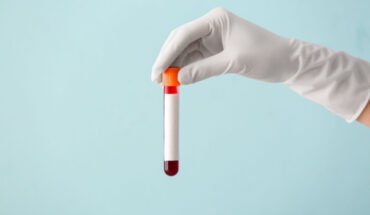When pupils return to school in September there is a steep rise in children hospitalised with asthma attacks. In the UK a child is admitted to hospital every 20 minutes because of an asthma attack. However, the number of children needing emergency treatment doubles in September compared to August.

So why should children settling back into school find their asthma suddenly becomes unstable? And how can parents help?
There are 1.1 million children in the UK with asthma. Each classroom in the UK has on average three children suffering from asthma. Surveys show around two thirds of them will have an asthma attack during the school day. The so-called ‘September Surge’ could be due to several factors:
- Exposure to cold and flu viruses, which are known triggers of asthma attacks
- The onset of cooler, damp autumn weather
- Reduced use of inhalers over the summer holidays leading to a fall in the protective benefits on the child’s airways
- New schools, teachers and routines, and increasing stress for children at the start of term
- Schools asthma management and whether the child has immediate access to their inhaler if they need it
Here are our top seven tips to helping your child avoid the asthma spike:
- Help your child to establish and keep a regular routine using their preventer inhalers over the summer months tin preparation for September.
- Ensure your child is competent at using their own inhalers properly, using spacers if appropriate.
- Help your child prepare a Personalised Asthma Action Plan (PAAP) with their asthma nurse or GP. Less than 25% of children with asthma have a Personalised Asthma Action Plan. Research shows children without a PAAP are four times more likely to end up in hospital than those with one.
- If your child has a PAAP share a copy with the school and at any activity clubs your child attends.
- Store a copy of it on your phone so you can share it with any caregivers, friends or family who may look after your child. A Personalised Asthma Action Plan contains information on triggers, how and when to take the preventers and relievers, how to spot asthma worsening, indicators that their asthma may be becoming unstable and a clear action plan in the case of an asthma attack.
- Before the end of summer rush, book an appointment to get your child’s reliever inhaler prescription renewed so they have a full and functioning inhaler for the new school year.
- Provide your school with a spare so your child can receive their medication even if they forget their own inhaler. (Schools are now able to buy a spare reliever inhaler and spacer for emergencies for any asthmatic children within the school that need one)
For information on how to help if someone is having an attack click here
Spotting the signs
Finally, understand the early warning signs your child could be more likely to have an asthma attack, as spotting these signs could help avoid it.
Asthma nurses report the following warning signs could indicate that someone’s asthma is becoming unstable:
- Using the reliever inhaler three or more times a week
- Finding that the reliever inhaler is not controlling symptoms for more than 4 hours
- Coughing or wheezing at night or in the morning
- Breathlessness when talking
- Struggling to keep up with friends, because of breathlessness
- Developing a cold or being exposed to flu like symptoms
Spotting these early signs and getting additional help and support from the GP or Asthma nurse, should hopefully swerve the September Surge.
- What is a seizure? - 13th March 2025
- Febrile Convulsions and Seizures in Children - 13th March 2025
- Why women are less likely to receive CPR or survive cardiac arrest - 6th March 2025






